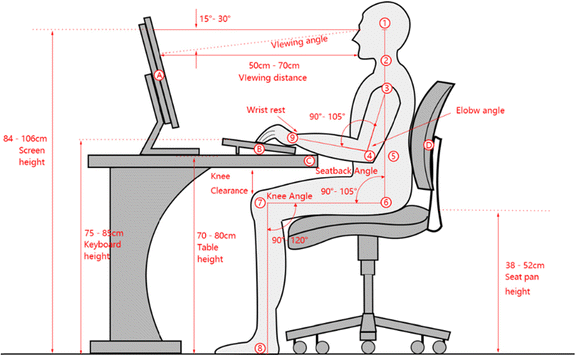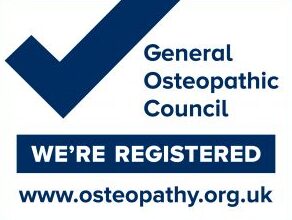
Creating an Ergonomic Workspace for Better Health
At City Osteopathy, we are passionate about helping our patients achieve better health naturally. Our mission includes empowering individuals with knowledge and practical strategies to improve their well-being. In today’s sedentary world, where desk work often dominates our routines, ergonomics plays a vital role in preventing discomfort and promoting lasting health.
Why Ergonomics Matters
Prolonged poor posture, often caused by sitting in fixed, compromised positions for extended periods, can lead to various health issues. These include back pain, neck tension, headaches, and discomfort in the upper limbs. Beyond the physical strain, these issues can impact productivity, focus, and overall quality of life.
By understanding ergonomic principles and implementing simple adjustments in your workspace, you can minimize these challenges. This proactive approach supports the body’s natural ability to heal, aligning with City Osteopathy’s commitment to addressing root causes and fostering holistic well-being.
Setting Up for Success: Achieving Neutrality
Neutrality is the cornerstone of an ergonomic workspace. This involves positioning your body to minimize strain on muscles and joints, allowing for optimal comfort and functionality. Here’s how to create an ergonomic setup that prioritizes neutrality:
1. Desk Height
Set your desk so your elbows rest at a close-to-90-degree angle when typing or using a mouse. This reduces strain on your arms and shoulders, promoting a more relaxed posture.
2. Chair Adjustment
Adjust your chair height to ensure your knees are also close to a 90-degree angle, with your feet flat on the floor. Use a footrest if your feet don’t reach the ground to maintain proper alignment.
3. Chair Proximity
Position your chair close to your desk so your torso remains upright and supported. Sitting too far away often causes slouching, which can lead to long-term strain on your back and neck.
4. Monitor Placement
Place the center of your monitor at eye level and about 60 cm (roughly an arm’s length) from your face. If using a laptop, a separate keyboard and mouse are essential to maintain proper alignment and prevent neck strain. Consider raising your laptop up to eye level.
5. Keyboard and Mouse Position
Keep your keyboard and mouse close to the edge of the desk to avoid overreaching. Maintaining a neutral wrist position reduces tension and improves typing efficiency.
Image by www.researchgate.net
Fine-Tuning Your Ergonomic Setup
While these foundational principles are essential, individual adjustments may be needed to suit your unique body dimensions and work habits. Consider these additional tips:
Armrests: If your chair has armrests, adjust them so your arms rest comfortably without shrugging your shoulders. This helps alleviate tension in the neck and upper back.
Lumbar Support: Use a chair with built-in lumbar support or add a cushion to maintain the natural curve of your lower back. Proper lumbar support prevents slouching and reduces spinal strain.
Lighting: Ensure your workspace is well-lit to minimize eye strain. Position screens to reduce glare from windows or overhead lighting.
By implementing these personalized adjustments, you create a workspace that not only prevents discomfort but also enhances your overall productivity and focus.
Exploring Standing Desk Options
Standing desks are an excellent alternative to traditional setups, offering variety and reducing the strain associated with prolonged sitting. However, proper ergonomic principles remain crucial when using a standing desk:
Foot Placement: Stand with your feet shoulder-width apart, distributing weight evenly. Avoid locking your knees, as this can hinder circulation.
Anti-Fatigue Mats: Use an anti-fatigue mat to cushion your feet and provide support during long periods of standing.
Position Switching: Alternate between sitting and standing throughout the day to prevent fatigue. A common guideline is 30 minutes of sitting followed by 30 minutes of standing.
Standing desks naturally encourage more movement, which is essential for maintaining muscle engagement and overall health. However, transitioning to this setup may require time to adjust, especially for individuals accustomed to prolonged sitting.
The Importance of Movement and Breaks
Even with a perfectly ergonomic setup, remaining in one position for too long can cause strain. Incorporating regular movement into your day is critical for maintaining flexibility, circulation, and overall health.
Tips for Staying Active During Work:
Take Regular Breaks: Set a timer to remind yourself to step away from your desk every 45 minutes. Use this time to stretch, mobilize your joints, or take a short walk.
Stretching Exercises: Focus on stretches targeting areas prone to tension, such as the neck, shoulders, and lower back. Simple exercises like shoulder rolls, neck tilts, and seated spinal twists can make a big difference.
Screen Breaks: To reduce eye strain, follow the 20-20-20 rule: every 20 minutes, look at something 20 feet away for at least 20 seconds.
Movement breaks not only reset your posture but also boost energy levels and mental clarity, allowing you to stay focused and productive.
Developing Postural Awareness
Building awareness of your posture and tension levels is a skill that takes time and practice. By regularly checking in with your body, you can identify areas of strain and make proactive adjustments to prevent long-term issues.
Strategies for Postural Awareness:
Body Scans: Periodically scan your body from head to toe, noting areas of discomfort or tightness. Adjust your posture or perform targeted stretches to address these sensations.
Mirrors for Feedback: Use a mirror to check your posture throughout the day. Notice if your head and shoulders are drifting forward and take steps to correct this alignment.
Seated Meditation: Spend a few moments identifying tension areas with your eyes closed. Deep breathing during this time can promote relaxation and reduce stress.
By cultivating this awareness, you empower yourself to make meaningful changes that support your overall well-being.

Image by ehs.stanford.edu
Long-Term Ergonomic Solutions
Investing in ergonomic tools and developing healthy habits can yield significant benefits over time. Here’s how to create a workspace and routine that supports your long-term health:
Ergonomic Accessories: Consider tools like a supportive office chair, an adjustable desk, or a keyboard with wrist support to enhance comfort and reduce strain.
Habit Tracking: Keep a journal to track posture and movement habits. Identify triggers for discomfort, such as prolonged screen time or poor lighting, and address them accordingly.
Professional Assessment: For persistent issues, consult an osteopath for a postural assessment. They can provide personalized guidance to address chronic discomfort and improve your ergonomic setup.
Aligning Ergonomics with Our Mission
At City Osteopathy, we believe health is more than the absence of pain—it’s about achieving complete well-being. Our holistic approach integrates osteopathy with complementary therapies to address the root causes of discomfort and empower patients to take charge of their health.
Ergonomics exemplifies this philosophy in action. By educating our community on preventive measures, such as optimizing workspaces, we help individuals prevent lifestyle-related health challenges. This proactive approach fosters independence and aligns with our vision of redefining natural healthcare.
Our Vision: A Healthier Future
We envision a world where health is defined by well-being, free from preventable lifestyle diseases. Through education, personalized care, and a commitment to natural solutions, we strive to empower our patients to stay active and enjoy life fully.
Partnering for Better Health
Your health is a partnership, and at City Osteopathy, we’re here to support you every step of the way. If you’re experiencing discomfort or have questions about optimizing your workspace, our team is ready to help. Together, we can craft personalized solutions to promote your well-being naturally.
Taking the First Step
Improving your ergonomic setup doesn’t require drastic changes—just mindful adjustments to your environment and habits. By prioritizing proper posture, incorporating movement, and staying aware of your body’s needs, you’re investing in a healthier, more active future.
Final Thoughts
Ergonomics is more than just a modern buzzword—it’s a practical tool for maintaining and improving health in today’s sedentary world. By aligning your workspace with your body’s needs and adopting healthy habits, you can prevent common ailments associated with desk work.
If you have any concerns about postural issue, please get in touch with our team
At City Osteopathy, we are dedicated to helping our patients achieve better health naturally. Through education, empowerment, and partnership, we aim to redefine healthcare and create a future where reliance on substances is replaced by sustainable, natural solutions. Let’s work together to achieve this vision, starting with something as impactful as your workspace.



